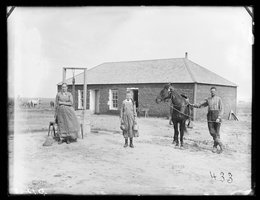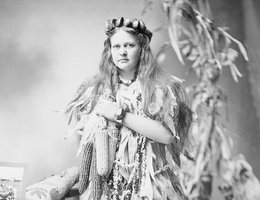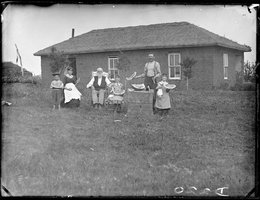

There were no plastic lunch boxes or thermoses on the homestead. This girl is carrying her lunch in a tin container called a lunch pail. Some families could afford to buy lunch pails for their children. Others saved empty lard or syrup buckets to use as lunch pails.

Meat was a special treat. There was no refrigeration and meat had to be smoked, salted, or dried to keep it from spoiling. Pork was the preferred meat up until the early 1890s, as it could be smoked, salted and dried easily. Drying was also the most common method of preserving food grown in the garden.

Agricultural products were symbols of the bounty of the land for many of the settlers. Check out common recipes from this era.

Watermelons were a delicacy for Nebraska settlers. When the watermelons were in season and ripe, they were a summer treat and a standard for the ten o’clock and three o’clock lunch. Some pioneer families even claimed to keep melons through the winter by stuffing them in haystacks.

When Mrs. W. L. Downing wrote to the Nebraska Farmer in the 1970s, she reminisced about her first year living with her new husband in a sod house north of Stapleton, Nebraska. While her husband planted corn, Mrs. Downing "planted watermelons with a hand planter...Oh, those melons!" She remembered, "We had melons for everyone in the neighborhood."
Discussion Questions:
How would the contents of the lunch you take to school differ from the contents of lunch taken by pioneer children?
Read the recipe on how to cook rabbit. Ask you parents if they have ever eaten rabbit.
Why are people living in Nebraska less likely to eat rabbit today?
Read the recipe for poverty cake. Why do you think it was given that label?

See if you can find the following things:
What is the family having for lunch?
Take a look at the feet of each family member. Why do you suppose daughter Bessie has clean feet? How did she keep them clean?
Is the cow standing on the roof of this dugout soddy?
Use the Photograph Analysis Worksheet from the National Archives to help you analyze the photo.